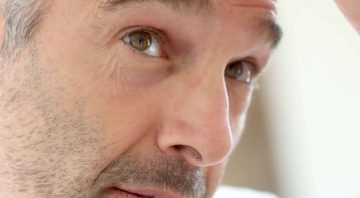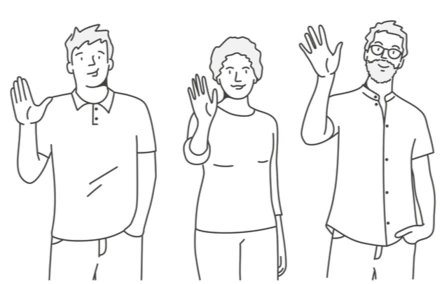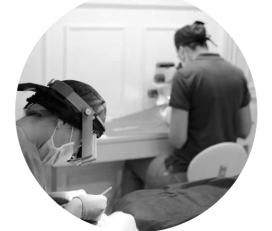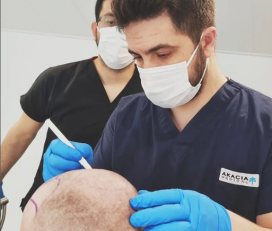

Farjo Hair Institute Manchester United Kingdom
About clinic:
An Elite Hair Restoration Team
Farjo Hair Institute is a world-renowned centre of excellence and one of most recognizable brands in hair transplant surgery.
Hair transplant surgery, hair loss medicine and hair restoration education are all part of our medical practice. These highly-respected doctors are some of the best in the field.
FUE could be right for you
FUE is a harvesting method where individual grafts can be ‘punched’ or ‘drilled’ from the donor’s scalp.
Scars can still be produced but they are often subtle and scattered over a large surface, making them easy to hide even with a cut. This is a great option for patients who prefer a shorter haircut, such as a No.1 cut or No.2 cut. However, we recommend that you consult with a professional to make sure that the treatment is right for you.
Step-by-step FUE treatment
Although no FUE surgical hair restoration procedure is ever identical, all follow the same basic steps from start to end.
Here are some things you can expect when visiting a Farjo Hair Institute Clinic.
- After discussing your hair loss and the options available to treat it, you can book an appointment to have FUE performed.
- We are currently able to safely transfer upto 2,500 follicular units grafts in one session. This will usually last the majority of the day. In order to reach higher numbers, it may be possible for two sessions to be conducted on the same day.
- If there are a lot of grafts involved, it will be necessary to shave the entire back and sides of your scalp on the day.
- Your hair transplant surgeon will discuss the details with you on the morning of your operation and draw the area where the hairs will be placed.
- A mild sedative will be administered to both the recipient and donor areas.
- You will feel the most discomfort for the first few minutes after you are given the anesthetic. This is similar to the pain you feel during dental work.
- After the anesthetic has been administered, the procedure starts with the removal of the follicular units grafts. This can be done either manually or mechanically using 0.8mm to 1.0mm drill bits and other equipment. A qualified doctor and a surgeon technician assist with this step.
- This will eventually leave a lot of small dots scars instead of a single linear donor scar.
- Your designated hair transplant surgeon will mark the areas that will be receiving the hair grafts. This is the final step that determines the aesthetic outcome of hairline design, hair distribution and direction, angle, angles, and orientation.
- After each session of graft-harvesting has been completed, our highly skilled and supervised team of technicians and nurses will place the grafts in the pre-made locations created by the surgeon.
- The grafts blend in between the thinning and balding areas to match the natural growth characteristics of your original hair.
- We prefer to pack densely at a rate between 35-50 grafts or 80-110 hairs per square centimeter. This is the best rate for the maximum hair survival rate of 85-90%.
- This means that a single operation can increase the hair density by an average of 25-30%
- The whole procedure is extremely simple and requires no dressings or bandages once it’s over.
- The nature of this technique may lead to a higher rate of hair transection, and therefore potential wastage.
- FUE grafts are also more susceptible due to the lack of protective tissue around the roots. Extra care must be taken when leaving the clinic to ensure that graft survival.
- You can leave the treatment area within 30 minutes.
- We can achieve results that are almost undetectable even with close scrutiny thanks to our expertise at each stage.
Dr Farjo hair transplant reviews
FAQs
Can anybody have FUE?
Except for hemophiliacs, people with serious or relevant medical conditions, or those who have no donor area. The surgeon might advise against a transplant if you are too young or have high expectations. If this happens, we'll discuss it in detail.
Is the procedure painful?
FUE hair transplants can be performed under local anaesthesia. Both the donor and recipient sites are completely frozen and de-sensitised. When the anaesthetic first is applied, you will feel some discomfort. You may wish to relax during the second half of the procedure. We will make sure that you are as comfortable as possible. During the donor harvesting portion of your FUE transplant, you will need to lie face down. Patients may experience discomfort for up to three days following the operation. This can be easily managed with the provided medication.
Does FUE leave scars?
FUE is designed to prevent a scarring line in the donor area. FUE Hair Transplants can leave scarring, but these are small dot-like markings scattered around the back and sides. Expert medical examination will not be able to detect them. FUE will likely allow you to have a number. FUE can give you a no. 1 or even a shaved appearance, but healing variation means that we cannot guarantee this.


















